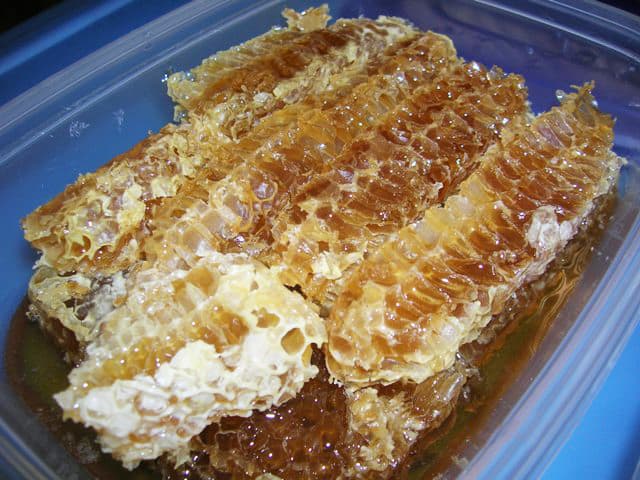Before penicillin, Dr. Mercola points out, honey was a conventional means for preventing and treating infection. Now we know why. Raw honey not only kills infectious bacteria, it also reduces the biofilms they produce. Raw honey is the stuff you get from your local beekeepers, including (shameless plug) Honeybee Keep. This is far superior to grocer honey, which is likely highly processed “Grade A” type honey—and not appropriate for wound treatment.
Used for centuries by the common folk, raw honey is finally being recognized by the medical elite as a beneficial wound treatment for a wide range of ailments, including traumatic and sloughy wounds, surgical incision sites, burns, and pressure ulcers.
Quantum physics tells us that everything is made up of the vibration of tiny particles in mostly empty space. If we were to combine the notion of “us” as being made of empty space with the idea that everything around “us” is also empty space, it’s easy to see how we’re all connected by these vibrating particles. We are one. Viewed this way, we can better understand how a terrestrial insect using plant nectar can become a key ally of a salt-water reptile.
This is now happening at the Georgia Sea Turtle Center, where the curative powers of raw honey are being used to heal sea turtle wounds (Bee Culture, October 2012, pg. 61). The turtle center is now working with local beekeepers to access local raw honey for its three key healing properties:
- The acidic property kills bacteria and fungi.
- The hyperosmotic property extracts debris.
- The bee enzyme called glucose oxidase (which is activated upon wound contact due to elevated pH) converts glucose into low levels of hydrogen peroxide.
There are additional twists to using honey. It stimulates the immune system, promotes cell growth, and provides anti-inflammatory and antioxidant benefits. Comb honey, including the honey and the wax, can be used to pack sea turtle wounds. And low glucose levels can even be treated by feeding the turtles honey.
Not only can honey work wonders on its own, it’s also been shown to be an effective wound treatment in combination with other ingredients. Calotropis procera (aka Giant milkweed and Sodom apple) has been used in tandem with honey for the management of toothaches, fresh skin burns, and bleeding of the gums, to name just a few. It’s also been shown that latex of Calotropis, when combined with a like amount of honey, is equally effective in healing open wounds in rabbits as triamcinolone (a long-acting synthetic topical steroid) given intramuscularly.
Great! It’s clear that honey—both alone and combined with other healthful ingredients—is an effective wound treatment for turtles and rabbits. But what about its effectiveness in treating human wounds? Luckily, a growing interest in research on this topic has produced some pretty amazing results. One study of 59 people with chronic wounds and ulcers reported that:
“The group included people with diabetic ulcers, burns, traumatic ulcers, gangrene, and other types of wounds. All had been treated with commercial wound dressings and antibiotics for periods of between one month and two years without results. Although 51 of the 59 wounds had been infected prior to honey treatment, all were free of infection within one week of starting honey dressing applications. In addition, inflammation and odor were markedly reduced and healing rapidly ensued.”
Honey as a wound treatment is of particular interest in light of rising global concerns over the emergence of antibiotic resistant “superbugs” (bacteria). Modern antibiotics are increasingly ineffective against these infections. Dr. Arjun Srinivasan of the Center for Disease Control (CDC) believes we may be at the end of the antibiotic age, likely caused by their prophylactic overuse (that is, preventative, before you even know you have a problem). Is it possible to decrease this destructive overuse of antibiotics by effectively using raw honey? Neil M. Ample, MD, thinks yes. He says, “Eleven lots of a medical-grade honey had uniform activity, killed resistant bacteria, and reduced skin colonization by 100-fold.”
Maybe it’s worth memorizing! Raw honey is:
- antibacterial
- antifungal
- anti-inflammatory
- antimicrobial
- antioxidant
- antiviral
What a deal! Maybe those silly little stinging insects called honeybees are worth saving. I’m sure trying.
Photo by Donald Studinski: Comb honey harvested 2012.
 Get self-health education, nutrition resources, and a FREE copy of A Terrible Ten: Health Foods That Ain't ebook.
Get self-health education, nutrition resources, and a FREE copy of A Terrible Ten: Health Foods That Ain't ebook.

Useful article that highlights the importance of honey in wound healing treatment.